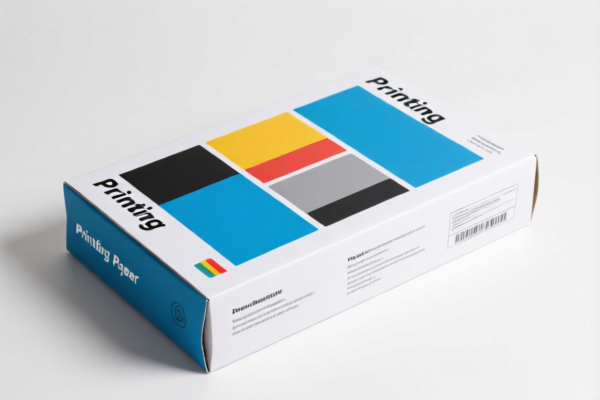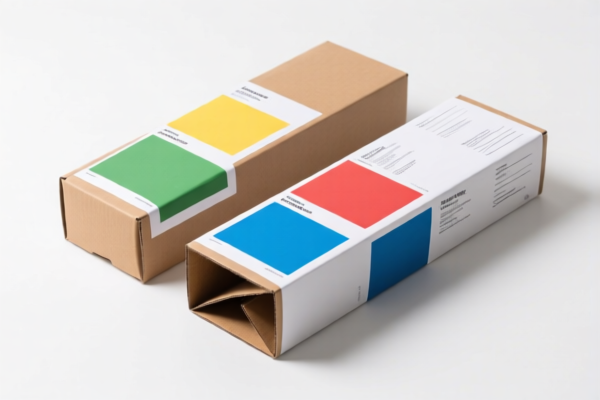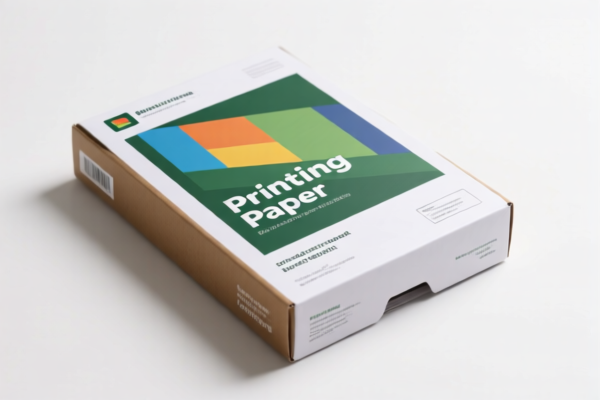| HS Code | Official Doc | Tariff Rate | Origin | Destination | Effective Date |
|---|---|---|---|---|---|
| 4819100020 | Doc | 55.0% | CN | US | 2025-05-12 |
| 4819502000 | Doc | 55.0% | CN | US | 2025-05-12 |
| 4823901000 | Doc | 55.0% | CN | US | 2025-05-12 |
| 4823902000 | Doc | 55.0% | CN | US | 2025-05-12 |
| 4707100000 | Doc | 55.0% | CN | US | 2025-05-12 |
| 4707900000 | Doc | 55.0% | CN | US | 2025-05-12 |
| 4706200000 | Doc | 55.0% | CN | US | 2025-05-12 |
| 4706100000 | Doc | 55.0% | CN | US | 2025-05-12 |
| 4911996000 | Doc | 37.5% | CN | US | 2025-05-12 |
| 4911998000 | Doc | 37.5% | CN | US | 2025-05-12 |
| 4906000000 | Doc | 37.5% | CN | US | 2025-05-12 |
| 9701290000 | Doc | 37.5% | CN | US | 2025-05-12 |
| 9701990000 | Doc | 37.5% | CN | US | 2025-05-12 |




Packaging Paper
Packaging paper encompasses a diverse range of paper types specifically engineered for protective and containment functions during the storage, transportation, and sale of goods. Its characteristics are determined by the intended application, balancing cost-effectiveness with necessary performance attributes.
Material Composition
The primary raw material is cellulose fibers, typically derived from wood pulp. Pulp sources include:
- Virgin Fiber: Obtained directly from trees, offering high strength and purity. Often used when food contact is required or superior performance is critical.
- Recycled Fiber: Manufactured from recovered paper materials. A more sustainable option, often used where strength requirements are less demanding.
- Kraft Pulp: A specific type of wood pulp produced using the kraft process, known for its high tensile strength and tear resistance.
- Other Fibers: In some cases, fibers from cotton, hemp, or other plant sources may be incorporated to enhance specific properties.
Additives are commonly used to modify paper characteristics:
- Sizing Agents: Improve water resistance and printability.
- Wet-Strength Resins: Enhance strength when exposed to moisture.
- Dyes & Pigments: Provide coloration and branding opportunities.
Purpose and Function
The core functions of packaging paper are:
- Protection: Shielding goods from physical damage (abrasion, impact, compression) during handling and transit.
- Containment: Holding products securely.
- Branding & Information: Providing a surface for printing logos, product details, and handling instructions.
- Barrier Properties: Offering some degree of protection from moisture, light, and gases (though often supplemented by coatings or other materials).
Usage Scenarios
Packaging paper finds application across a wide range of industries:
- Food Packaging: Wrappers, bags, trays, and boxes for dry goods, produce, and prepared foods. Often requires food-grade certification.
- Retail Packaging: Shopping bags, gift wrapping, product boxes.
- Industrial Packaging: Wrapping paper for protecting manufactured components, cushioning materials.
- Shipping & Logistics: Void fill, wrapping for palletized goods.
- E-commerce Packaging: Boxes, mailers, cushioning.
Common Types
- Kraft Paper: Known for its strength and durability. Available in various weights and grades, including bleached and unbleached options. Commonly used for shopping bags, wrapping paper, and industrial packaging.
- Waxed Paper: Coated with wax to provide moisture resistance. Used for food packaging, wrapping perishable items.
- Greaseproof Paper: Specifically treated to resist grease penetration. Used for food packaging, particularly for fried foods.
- Glassine Paper: A smooth, translucent paper with a high density, offering a barrier against moisture and grease. Used for food packaging, confectionery wrappers.
- Tyvek: A synthetic material often used as a protective wrapping for construction materials, hazardous goods, and sensitive items. While not strictly paper, it often serves similar packaging functions.
- Corrugated Cardboard: A multi-layered paper material known for its strength and cushioning properties. Used for shipping boxes and protective packaging.
- Honeycomb Paper: A paper structure providing cushioning and void fill. A sustainable alternative to plastic foam.
PACKAGINGPAPER broadly encompasses various paper-based materials used for containment, protection, or transportation of goods. Based on the provided information, several HS codes may be relevant depending on the specific composition and intended use of the packaging paper.
Here are the potentially applicable HS codes:
- 4819100020: This code covers cartons, boxes, and cases of corrugated paper or paperboard. It specifically includes sanitary food and beverage containers. The total tax rate is 55.0%, comprised of a 0.0% base tariff and a 25.0% additional tariff, increasing to 30.0% after April 2, 2025.
- 4819502000: This code covers other packing containers, including record sleeves, made of paper, paperboard, cellulose wadding, or webs of cellulose fibers. It also includes sanitary food and beverage containers. The total tax rate is 55.0%, comprised of a 0.0% base tariff and a 25.0% additional tariff, increasing to 30.0% after April 2, 2025.
- 4707100000: This code covers unbleached kraft paper or paperboard or corrugated paper or paperboard, categorized as recovered (waste and scrap) paper and paperboard. The total tax rate is 55.0%, comprised of a 0.0% base tariff and a 25.0% additional tariff, increasing to 30.0% after April 2, 2025.
- 4707900000: This code covers other recovered (waste and scrap) paper and paperboard, including unsorted waste and scrap. The total tax rate is 55.0%, comprised of a 0.0% base tariff and a 25.0% additional tariff, increasing to 30.0% after April 2, 2025.
Chapter Breakdown:
- 48: Pulp of wood or other fibrous cellulosic material; recovered (waste and scrap) paper or paperboard. This chapter generally covers paper and paperboard products.
- 47: Pulp of wood or other fibrous cellulosic material; recovered (waste and scrap) paper or paperboard. This chapter generally covers recovered paper and paperboard products.
Heading Breakdown:
- 19: Products of paper or paperboard not elsewhere specified. This heading covers a wide range of paper and paperboard products.
- 07: Recovered (waste and scrap) paper or paperboard. This heading specifically covers recycled paper and paperboard.
Important Note:
The applicable tax rate for codes 4819100020, 4819502000, 4707100000, and 4707900000 is 55.0%, with a 0.0% base tariff and a 25.0% additional tariff, which will increase to 30.0% after April 2, 2025.
Customer Reviews
The site has a lot of information, but I found the tax rate explanation a bit confusing. It would be better if the effective date was more prominent.
I was looking for the HS code for corrugated paper and found 4819100020 here. The tariff rate is clearly listed, which makes exporting much easier.
The details on the different types of packaging paper were really helpful. I now understand why kraft paper is used for industrial packaging.
This site has all the HS codes for packaging paper, including 4819100020. Great for finding the right tariff rate for exporting to the US.